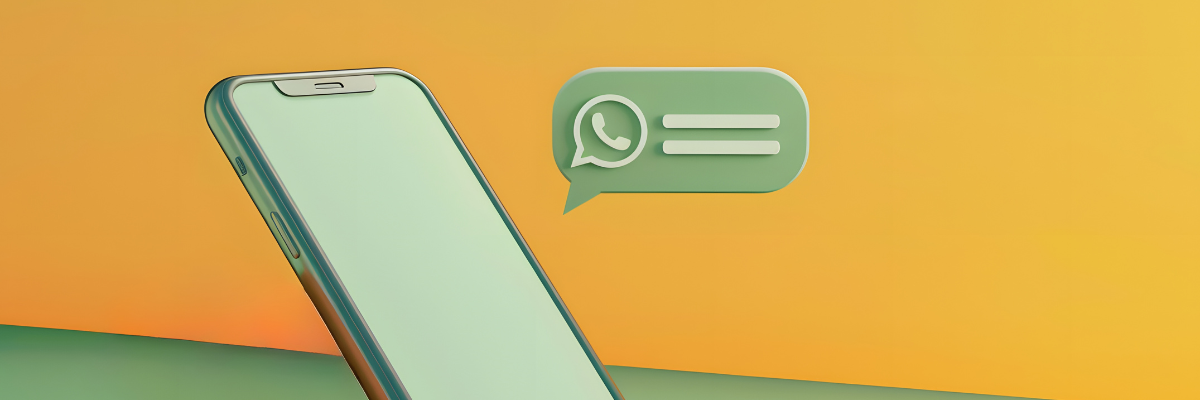Introduction
A major change is coming to WhatsApp Business pricing.
Starting July 1, 2025, the platform will move from conversation-based billing to per-message pricing for template messages.
If you’re using WhatsApp for marketing, authentication, or transactional messages, this change affects your costs directly.
This article breaks down what’s changing, what remains free, and how you should adjust your strategy accordingly.
Key Takeaways
- New pricing begins July 1, 2025: template messages billed per delivery.
- Utility and free-form messages within a Customer Service Window (CSW) remain free.
- Unlimited messaging during CSW and 72-hour windows from ad clicks continues.
- WhatsApp will reduce rates for utility/authentication templates in certain markets.
WhatsApp Pricing: What’s Changing in July 2025?
Current Model (Valid Until June 30, 2025)
Under the existing system, WhatsApp Business uses a conversation-based pricing model:
- When you send the first template message (whether marketing, utility, or authentication), a 24-hour paid conversation window opens.
- All additional template or free-form messages sent within that window are free, even if the recipient does not respond.
Example: If you send three marketing messages in a single 24-hour period, you pay only once.
This model has made it easy for businesses to send follow-ups without incurring additional fees, encouraging richer interactions.
New Model (Effective July 1, 2025)
The new pricing system moves to per-message billing for outbound template messages:
- Each delivered marketing, utility (outside CSW), or authentication message is charged separately.
- The 24-hour window concept no longer applies to these message types.
Example: If you send three marketing templates in a day, you are billed three times—once per message.
This aligns WhatsApp with traditional pay-per-message systems (e.g., SMS or email marketing platforms) and simplifies costs per interaction.
What Remains Free?
While this may sound like a complete shift, there are important exceptions that remain cost-free for businesses:
1. Customer Service Window (CSW)
When a user sends you a message, a 24-hour CSW opens. Within that window:
- Free-form (non-template) replies are free.
- Utility template messages are also free.
This gives businesses the flexibility to address queries, send follow-ups, and resolve issues at no cost—maintaining the integrity of service-first communication.
2. Ad Entry Points
If a customer contacts your business through a click-to-WhatsApp ad (e.g., on Facebook or Instagram), you get a 72-hour free messaging window starting from their initial message.
Within those 72 hours, you can:
- Send unlimited free messages, including templates.
- Engage them with promotions, confirmations, or onboarding journeys.
This makes ads a powerful acquisition and re-engagement tool, especially under the new pricing model.
Why WhatsApp Is Changing Its Pricing
According to WhatsApp, the shift to per-message pricing is designed to:
- Simplify the commercial offering.
- Align with industry standards (e.g., SMS billing or paid email credits).
- Encourage precision, rather than volume-based engagement.
Moreover, WhatsApp plans to reduce rates for utility and authentication messages in some markets, balancing the added cost for marketers with affordability for transactional uses.
Strategic Considerations for Businesses
1. Review Your Automation Flows
Businesses using automated drip campaigns or multistep onboarding sequences must account for each template message being billed individually.
Action tip:
- Condense multi-step flows.
- Use in-session replies or trigger CSWs to maintain message continuity.
2. Optimize Message Timing and Content
Every message matters now. Crafting concise, value-driven messages becomes more critical to justify costs.
Action tip:
- Group updates and promotions.
- Use rich templates (buttons, media) to drive action in fewer messages.
3. Increase Use of CSW Messaging
You can still communicate freely once a user messages you.
Action tip:
- Encourage inbound messages with prompts (e.g., “Reply YES to get a deal”).
- Build support-first experiences to keep windows open.
4. Leverage Ads Strategically
Maximize the 72-hour free window from ad entry points.
Action tip:
- Use click-to-WhatsApp ads for seasonal campaigns or welcome flows.
- Build journeys triggered from ad interactions.
Comparing Pricing Models Side by Side
| Feature | Until June 30, 2025 | Starting July 1, 2025 |
|---|---|---|
| Template Message Billing | Once per 24h conversation | Per delivered message |
| Free-form Messaging in CSW | Free | Free |
| Utility Templates in CSW | Free | Free |
| Templates Outside CSW | Charged via conversation | Charged per message |
| Ad Entry Points | 72h free window | 72h free window |
Final Thoughts
WhatsApp’s pricing update may initially seem like a cost increase, but it actually promotes intentional messaging, better user experience, and aligns with familiar communication models.
By understanding what’s changing—and what remains free—you can adapt your strategy without disruption and continue to build meaningful conversations.
Stay informed. Stay prepared. Start planning your July campaigns now.
Learn More
Official WhatsApp Business Pricing Update
FAQ
What is the new WhatsApp Business pricing model? Starting July 1, 2025, WhatsApp Business will charge per delivered template message instead of using a 24-hour conversation window.
Are messages within a customer service window still free? Yes. Free-form and utility template messages sent within a 24-hour customer service window remain free of charge.
How are ad-triggered messages billed? If a user messages you through a click-to-WhatsApp ad, you get a 72-hour window of unlimited free messaging.
Will rates for utility or authentication messages change? Yes, WhatsApp plans to reduce rates for utility and authentication messages in several markets to maintain affordability.
What should I change in my messaging strategy? Businesses should condense multi-step flows, optimize message value, encourage customer replies to open CSWs, and consider using ad-triggered messages to benefit from the 72-hour window.




